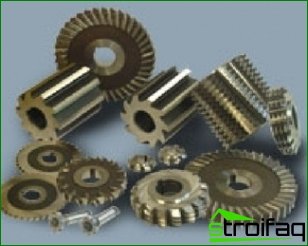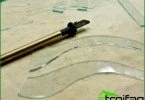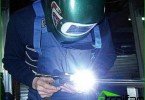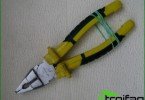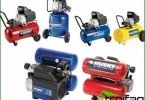Wood Milling Cutters used to perform grooves, edges and other operations. They allow you to make grooves and profiles on wooden products. Through the use of the milling method, you can process a wide variety of shaped and flat bases. A milling cutter is a special equipment that rotates the tool at high speeds, as a result of which it performs translational movements. These movements are rectilinear or helical, and in some cases rotational movements are used..
To perform high-quality processing using milling machines. They are specialized machines, which include electric motors mounted on a solid surface. For their location, tables are used that are connected to the motors via pins. In this case, a horizontal washer should be used, which allows the depth of the workpiece to be measured..
Types of modern milling machines for wood processing
Nowadays, there are the most diverse varieties of cutters: face, disk, key and other types. Each variety is distinguished by its strengths and weaknesses, which influence their choice. Machines located in a horizontal position assume the use of cylindrical mills. They allow you to process flat surfaces. On such machines, helical or straight teeth are used..
Thanks to the use of straight teeth, it is possible to process narrow planes. Screw counterparts are designed to work with wide surfaces. The use of such structures is accompanied by significant axial forces, which are influenced by the axis of inclination of the teeth. The use of special cutters can reduce this phenomenon. These cutters are equipped with two rows of teeth that are in different directions. If we compare cylindrical mills and face mills, then the performance of the latter is an order of magnitude higher.
They are installed on vertical machines, and the teeth used in them have profiling upper parts of the edges of the teeth. Additional cutting elements are located at the ends. The main function is assigned to the outer side surfaces. If there is a need to make grooves in the corners or if you need to get grooves, then angle cutters are used. They can have one or two corners. In models with one corner, the edges are on the ends and conical surfaces. If the cutter is two-angle, then the edges are placed on a pair of surfaces. This solution allows you to perform smooth operation, this is due to the possibility of compensation of axial forces. To reduce wear in the corner mills, rounded tops are made.
Wood Milling Cutters used to perform grooves, edges and other operations. They allow you to make grooves and profiles on wooden products. Through the use of the milling method, you can process a wide variety of shaped and flat bases. A milling cutter is a special equipment that rotates the tool at high speeds, as a result of which it performs translational movements. These movements are rectilinear or helical, and in some cases rotational movements are used..To perform high-quality processing using milling machines. They are specialized machines, which include electric motors mounted on a solid surface. For their location, tables are used that are connected to the motors via pins. In this case, a horizontal washer should be used, which allows the depth of the workpiece to be measured..
Types of modern milling machines for wood processing
Nowadays, there are the most diverse varieties of cutters: face, disk, key and other types. Each variety is distinguished by its strengths and weaknesses, which influence their choice. Machines located in a horizontal position assume the use of cylindrical mills. They allow you to process flat surfaces. On such machines, helical or straight teeth are used..
Thanks to the use of straight teeth, it is possible to process narrow planes. Screw counterparts are designed to work with wide surfaces. The use of such structures is accompanied by significant axial forces, which are influenced by the axis of inclination of the teeth. The use of special cutters can reduce this phenomenon. These cutters are equipped with two rows of teeth that are in different directions. If we compare cylindrical mills and face mills, then the performance of the latter is an order of magnitude higher.
They are installed on vertical machines, and the teeth used in them have profiling upper parts of the edges of the teeth. Additional cutting elements are located at the ends. The main function is assigned to the outer side surfaces. If there is a need to make grooves in the corners or if you need to get grooves, then angle cutters are used. They can have one or two corners. In models with one corner, the edges are on the ends and conical surfaces. If the cutter is two-angle, then the edges are placed on a pair of surfaces. This solution allows you to perform smooth operation, this is due to the possibility of compensation of axial forces. To reduce wear in the corner mills, rounded tops are made.
Features classification mills
Today there is a huge variety of cutters. They can vary in the form of manufacturing the back surfaces of the edges. They are made in a straight or curved form. To process the profiles, curved spiral-shaped knives are used in milling cutters of the backed type. If there is a need to create grooves or spikes, then pointed milling cutters go into business. They are made in cylindrical form..
Milling cutters can be classified into types, one of the important features is the way the device is mounted on the spindle. Equipment for this indicator is divided into mounted and trailer. End mills can also be called tail mills. A clamping chuck and collet are used to secure them. Mounted type cutters are screwed into the spindles. The screwing direction must be opposite to the rotation. The tool can be designed for roughing or finishing work. Rough milling is performed by rough milling, and the use of a finishing tool allows to achieve perfect smoothness of the material.
How to choose the right milling cutter
When choosing a cutter, it is necessary to take into account the technical parameters of the machine. For each product there is a passport indicating the milling cutters intended for it that can be used on it. The diameter of the required milling cutter type depends on these indicators. The most common products with a diameter of 80-180 mm. In addition, it is important to pay attention to the method of fixing the cutter on the spindle. For installation of mills with the increased diameter cartridges and plugs are used.
If the machine mandrel does not have a nut thread, you will need hydraulic bushings. Milling cutters can be used here for fastening with a collet and a nut. When choosing a particular cutter, it is important to consider the alloy used to produce the teeth. Its strength will determine the fence of the processed material. It is good to check the accuracy of its manufacture when buying a cutter.
It is important to understand that some manufacturers produce low quality cutters. Taking into account the recommendations of this article, you can optimally choose the cutter for your machine.
